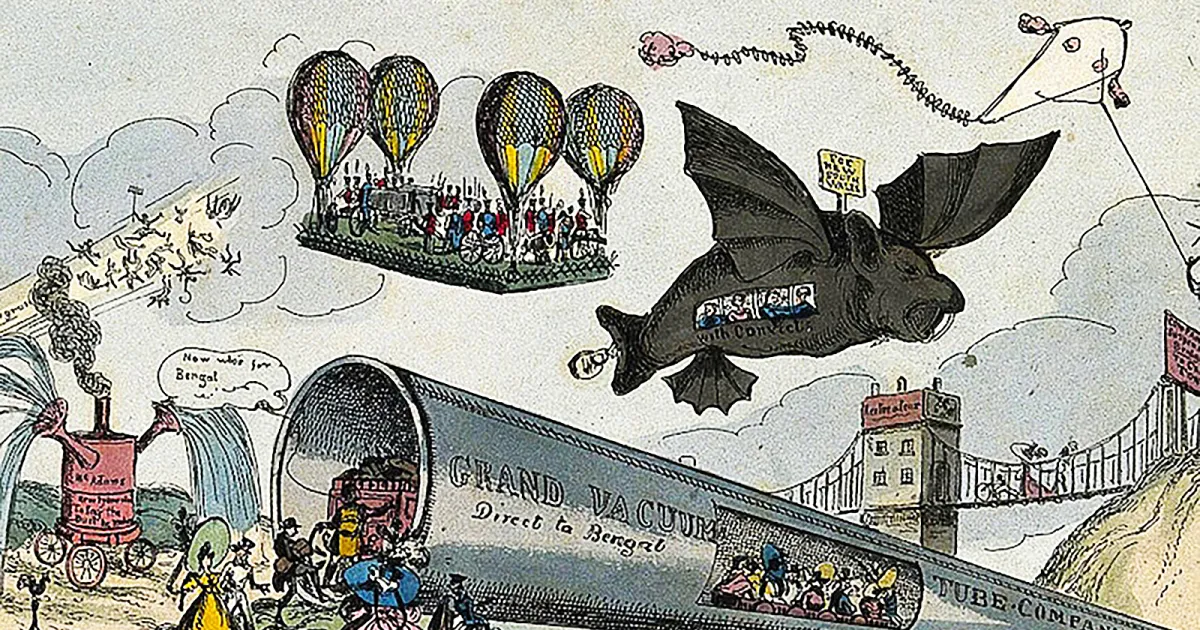Table of Contents
ToggleIntroduction
How Sci-Fi Literature Predicts Future Realities Audiences have long been enthralled by science fiction (sci-fi) because of its imaginative depictions of futuristic societies, technical breakthroughs, and worlds. Sci-fi authors possess an unmatched capacity to envision worlds beyond the confines of the present, frequently crafting scenarios that test our comprehension of politics, technology, and human nature.
Despite having its roots in the imagination, science fiction is more than just speculative fantasy. In actuality, a lot of the social and technological advancements that we today consider commonplace were initially imagined in science fiction books. The genre has regularly foreseen or influenced real-world advancements, like as space flight and artificial intelligence, making it difficult to distinguish between fiction and the future.
The Power of Speculation: Sci-Fi as a Predictor of Technology
Sci-fi’s potential to predict the future lies in its speculative nature. Writers often extrapolate existing knowledge, pushing it to its logical extreme or imagining completely new possibilities. The genre’s ability to foresee technological advancements is particularly evident in its treatment of machines, computers, and space exploration. In many ways, sci-fi writers can be viewed as cultural prophets, imagining technologies that scientists and engineers would later strive to bring into existence.
Early Sci-Fi and the Vision of Space Exploration
One of the most well-known examples of sci-fi predicting future realities is the genre’s depiction of space exploration. Early works, such as Jules Verne’s From the Earth to the Moon (1865), paved the way for the public imagination surrounding space travel. Though Verne’s novel was written long before the advent of modern space technology, it accurately described the principles of rocketry and the mechanics of launching a spacecraft.
The genre’s true prophetic vision became more evident in the 20th century. Arthur C. Clarke’s 2001: A Space Odyssey (1968), written alongside Stanley Kubrick’s iconic film, accurately anticipated the development of satellites, artificial intelligence, and the potential for human space exploration. Clarke’s depiction of space stations, lunar landings, and space tourism was instrumental in inspiring the actual space race that culminated in the Apollo 11 moon landing in 1969.
Similarly, Isaac Asimov’s Foundation series (1951) depicted a future where vast interstellar empires communicated using advanced technology. Asimov’s vision of space colonization and a galaxy-spanning society was a powerful precursor to modern ideas of space travel, such as Elon Musk’s SpaceX and NASA’s goals to send humans to Mars. The idea of establishing human colonies beyond Earth is no longer the stuff of fantasy but is actively being researched and pursued.
Read More
The Rise of Artificial Intelligence: A Sci-Fi Vision Realized
Another area where sci-fi literature has profoundly influenced our understanding of the future is in the realm of artificial intelligence (AI). In the mid-20th century, writers like Isaac Asimov and Philip K. Dick explored the ethical, psychological, and social implications of machines gaining intelligence and autonomy. Asimov’s Robot series, for instance, introduced his famous Three Laws of Robotics, which became foundational to discussions about machine ethics and AI development. These laws outlined principles for ensuring that robots would serve humanity safely and justly—a topic that remains highly relevant today as AI continues to develop.
In the late 20th and early 21st centuries, works like Neuromancer (1984) by William Gibson and Do Androids Dream of Electric Sheep? (1968) by Philip K. Dick became touchstones for exploring the intersection of humans and machines, particularly the implications of creating artificial beings that could pass as human.
These works predicted the rise of virtual reality, neural interfaces, and even concepts like the “singularity,” when AI surpasses human intelligence. Today, technologies such as Google’s DeepMind, self-learning algorithms, and advanced robotics reflect the speculative visions once confined to the pages of sci-fi novels.

Virtual Reality and the Digital World
The concept of virtual reality (VR), as we know it today, also emerged from the realm of science fiction. Authors like William Gibson in Neuromancer and Neal Stephenson in Snow Crash (1992) envisioned fully immersive digital worlds where individuals could interact with cyberspace in ways that mirrored physical reality.
These ideas were once thought to be beyond reach, but advancements in technology have made VR a part of modern life. Companies like Oculus, Sony, and HTC have developed VR headsets that provide users with immersive experiences, from gaming to digital simulations.
While VR technology itself is no longer a fiction, the idea of “cyberspace” or interconnected virtual worlds is still evolving. Sci-fi continues to shape our understanding of digital spaces, particularly in the realm of social interaction, economics, and governance. Concepts such as cryptocurrency, virtual real estate, and even digital economies can trace their origins back to the speculative worlds imagined by sci-fi writers in the late 20th century.
Sci-Fi’s Influence on Social Structures and Societal Evolution
While sci-fi often focuses on technological advancements, its impact extends to the societal and political domains as well. Sci-fi writers have used their stories to critique contemporary social issues, propose new forms of government, and explore alternative social structures. Through the lens of speculative fiction, readers have been introduced to utopian and dystopian societies that challenge existing norms and question the course of human development.
Utopian and Dystopian Visions: Shaping the Future of Society
One of the most influential ways in which sci-fi predicts future realities is through its portrayal of utopian and dystopian societies. These fictional societies often serve as cautionary tales, providing warnings about the consequences of unchecked technological growth, authoritarian regimes, or environmental destruction. The works of authors like Aldous Huxley (Brave New World, 1932) and George Orwell (1984, 1949) depicted societies characterized by surveillance, control, and loss of individual freedoms, offering stark warnings about the direction of future political systems.
Huxley’s Brave New World explores a society in which genetic engineering, surveillance, and a rigid class structure dominate daily life. Similarly, Orwell’s 1984 introduced the concept of “Big Brother” and the dangers of totalitarianism in the age of mass surveillance. Both works predicted social structures and technologies that bear eerie resemblances to our current reality. The proliferation of surveillance technologies, the rise of data privacy concerns, and the increasing concentration of power among a few corporate entities evoke the dystopian landscapes imagined in these novels.
In contrast, sci-fi also provides visions of utopian societies that celebrate equality, social justice, and harmonious coexistence. Ursula K. Le Guin’s The Dispossessed (1974), for instance, explores the tensions between two planets—one capitalist and the other anarchist—offering readers a glimpse into an idealized vision of social and political equality. These alternative social models continue to inspire debates about how human societies could evolve in more equitable directions.
Read More
Feminist and Queer Sci-Fi: Reimagining Gender and Sexuality
Another area where sci-fi literature has influenced future realities is in its exploration of gender and sexuality. Authors like Octavia Butler, Margaret Atwood, and Samuel Delany have used sci-fi to examine the fluidity of gender roles, the possibilities of non-binary and queer identities, and the social constructions of sexuality. Butler’s Kindred (1979) and Atwood’s The Handmaid’s Tale (1985) explore the intersections of gender, power, and society, providing cautionary tales about patriarchal oppression.
In contrast, authors like Delany in Triton (1976) and Le Guin in The Left Hand of Darkness (1969) push the boundaries of conventional gender roles, imagining societies where gender is fluid, non-binary, or even entirely mutable. These explorations of gender identity, sexual freedom, and non-normative relationships continue to resonate in the context of contemporary debates surrounding transgender rights, non-binary gender identity, and sexual autonomy.
Sci-Fi and Environmental Awareness
In addition to social and political issues, sci-fi literature has also been instrumental in predicting future environmental challenges and their potential consequences. Works like Rachel Carson’s Silent Spring (1962), though not strictly sci-fi, laid the foundation for a growing awareness of the dangers of industrial pollution and environmental degradation. In the world of science fiction, novels like Kim Stanley Robinson’s Mars Trilogy (1990-1996) and Paolo Bacigalupi’s The Windup Girl (2009) address themes of environmental collapse, resource scarcity, and climate change.
Robinson’s Mars Trilogy, which focuses on the colonization and terraforming of Mars, also reflects the environmental concerns of Earth and the consequences of human intervention in natural ecosystems. The growing concern over climate change and its potential impact on future generations is reflected in the increasing prevalence of environmental sci-fi, which portrays the dangers of unchecked industrial growth and ecological collapse.

Conclusion
Science fiction has never been merely a genre of escapism or fantasy. It has long served as a vital lens through which we can examine our present, predict the future, and warn of potential dangers. From technological advancements like AI and space exploration to social structures and environmental challenges, sci-fi literature has anticipated many of the issues and innovations that shape our world today.
By imagining the future, sci-fi offers both a reflection of our current trajectory and a roadmap for what might come. It challenges us to think critically about the implications of the technologies we create and the societies we build.
As we continue to innovate and evolve, sci-fi will undoubtedly continue to provide valuable insights into the possibilities and perils that lie ahead.
Read More
FAQ
1. How does science fiction predict the future?
Science fiction predicts the future by extrapolating current trends in technology, society, and science, pushing them to their logical extremes or imagining entirely new possibilities. Sci-fi often serves as a form of speculative fiction, where authors explore potential outcomes based on contemporary knowledge.
2. What role does technology play in science fiction literature?
Technology is a central theme in many sci-fi novels, often serving as both a plot device and a means to explore societal or ethical questions. Sci-fi literature imagines technological advancements like AI, space travel, and virtual reality, many of which have inspired or influenced real-world innovations.
3. Can sci-fi address real-world social and political issues?
Yes, sci-fi often uses its speculative nature to address real-world issues, including gender, race, power, and political systems. Many sci-fi works, such as Orwell’s 1984 or Atwood’s The Handmaid’s Tale, serve as cautionary tales about societal trends, offering insights into the dangers of authoritarianism, surveillance, and inequality.
4. How does sci-fi influence scientific research?
Sci-fi often serves as inspiration for scientists and innovators, providing creative frameworks for exploring new ideas and technologies. Concepts like space travel, AI, and virtual reality were first popularized in sci-fi literature, influencing real-world scientific research and technological advancements.
5. How can sci-fi shape our understanding of the future?
Sci-fi shapes our understanding of the future by encouraging us to think critically about the implications of emerging technologies, social changes, and global challenges. It provides a platform for exploring both utopian possibilities and dystopian risks, helping us prepare for the unknown.
















